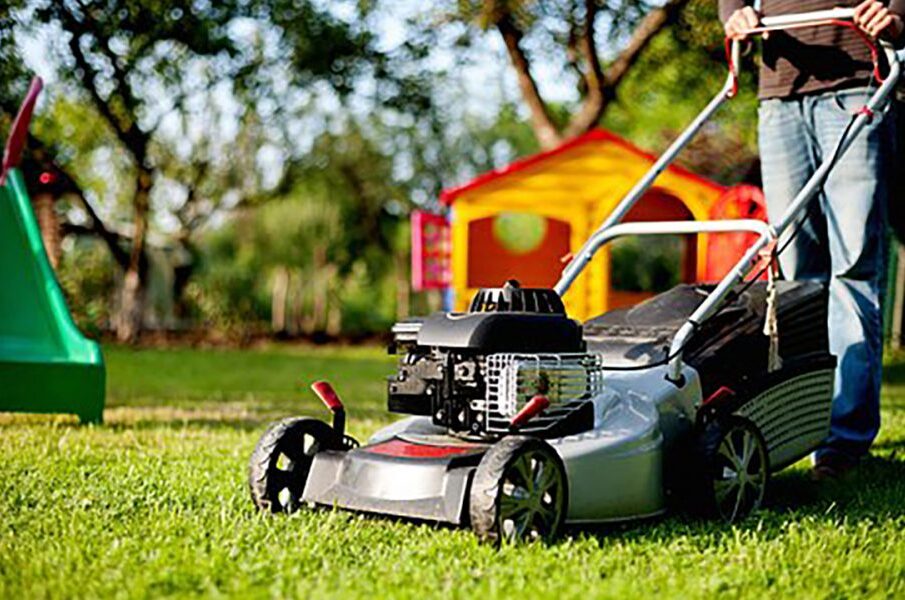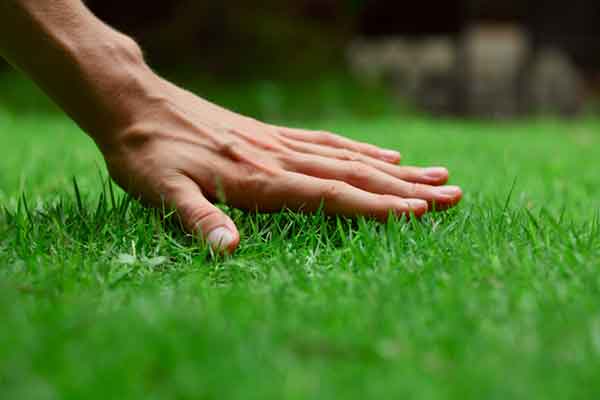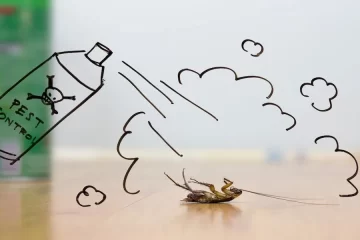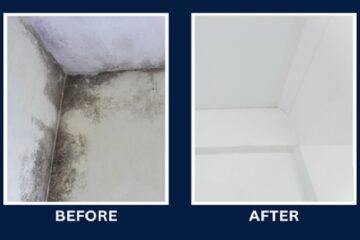The Essential Guide to Lawn Care in Columbia, MD

Key Takeaways:
- Choosing the right grass type is important for the unique climate, soil type, and shade conditions in Columbia, MD
- Understanding the seasonal needs of your lawn helps with proper care and maintenance
- Proper watering techniques include watering deeply and infrequently, watering in the early morning, and adjusting watering based on weather conditions
- Implementing effective weed control strategies and managing common lawn pests are essential for a thriving lawn
- Preventing lawn diseases requires proactive measures, such as proper watering and selecting disease-resistant grass varieties
- Proper mowing techniques, fertilization tips, and regular aeration and overseeding contribute to maintaining a beautiful lawn
- Addressing clay soil challenges and watering restrictions in Columbia, MD requires specific care practices
- Effective winter lawn care involves mowing, removing debris, avoiding walking on frozen grass, and considering overseeding with cold-resistant grass varieties
Taking Care of Your Lawn
Caring for your lawn in Columbia, MD requires understanding the unique challenges and considerations of this specific region. From choosing the right type of grass to proper watering techniques, here is a comprehensive guide to help you maintain a healthy and vibrant lawn in Columbia, MD.
Choosing the Right Grass for Your Columbia, MD Lawn
When selecting the grass for your lawn in Columbia, MD, it is important to consider the climate, soil type, and shade conditions. The most common grass types recommended for this area include Tall Fescue and Kentucky Bluegrass. These grasses are known for their ability to withstand the region’s hot summers and cold winters.
Tall fescue is a cool-season grass that does well in the temperate climate of Columbia. It has deep roots and good drought tolerance, making it suitable for both sunny and shaded areas. Kentucky Bluegrass is known for its lush appearance and ability to repair itself. It requires more maintenance and regular watering to keep it looking its best.
Before choosing a grass type, consider factors such as the amount of sunlight your lawn receives, the level of foot traffic, and any specific lawn goals you have, such as having a uniform, manicured look or prioritizing durability.
Understanding the Seasonal Needs of Your Lawn
The seasonal needs of your lawn in Columbia, MD will vary throughout the year. To guarantee appropriate upkeep and treatment, it is imperative to comprehend their necessities.
In the spring, focus on lawn preparation and weed control. This is the time to remove any debris, dethatch the lawn, and apply pre-emergent herbicides to prevent the growth of weeds. It is also a good time to aerate the soil and overseed if necessary.
To promote deep root growth, water your grass deeply and seldom during the sweltering summer months. To reduce evaporation, avoid watering during the hottest parts of the day. Regular mowing is also important during this time to keep the grass at the recommended height for your specific grass type.
In the fall, continue regular mowing and gradually reduce the grass height. This helps prevent certain diseases and promotes a healthier lawn. Fall is also an ideal time to fertilize and control weeds as the grass prepares for winter dormancy.
During winter, the focus shifts to protecting your lawn from the cold. Avoid walking on frozen grass to prevent damage, and remove any debris or leaves that may smother the grass. Winter is also a good time to sharpen your lawn mower blades in preparation for the following season.
Proper Watering Techniques for a Lush, Healthy Lawn
Proper watering is crucial for a lush and healthy lawn in Columbia, MD. A number of problems, including weed growth, shallow root development, and lawn illnesses, can result from either overwatering or underwatering. Here are some essential watering techniques to keep in mind:
- Water deeply and infrequently: Aim for about 1 inch of water per week, including rainfall. Watering deeply encourages the roots to grow deeper into the soil, making your lawn more resistant to drought.
- Water in the early morning: Watering in the early morning allows the grass to dry before the evening, reducing the risk of lawn diseases. Avoid watering during the hottest part of the day to minimize evaporation.
- Use a rain gauge or moisture meter: These tools can help you accurately monitor the amount of water your lawn receives, ensuring you are providing the right amount.
- Adjust watering based on weather conditions: During periods of heavy rainfall, you may need to reduce or skip watering. Conversely, during prolonged dry spells, you may need to increase watering.
By following these watering techniques and adjusting them based on the specific needs of your lawn, you can maintain a vibrant and healthy grass throughout the year.
Preventing Common Lawn Issues
A well-maintained lawn is not immune to common issues such as weeds, pests, and diseases. Understanding how to prevent and manage these issues is essential for a thriving lawn in Columbia, MD.
Dealing with Weeds: Effective Strategies for Weed Control
If weeds are not controlled, they can swiftly take over a lawn. Implementing effective strategies for weed control is essential in maintaining a weed-free lawn in Columbia, MD.
Start by ensuring proper lawn care in Columbia, MD, such as regular mowing at the recommended height for your grass type and adequate fertilization. A healthy, dense lawn is less prone to weed infestations. Additionally, regularly inspect and manually remove weeds as soon as you spot them.
For more challenging weed issues, herbicides can be used. It is critical to select herbicides made especially to eradicate the kinds of weeds that are growing in your lawn. To guarantee safe and efficient use, carefully follow the directions.
Implementing proper weed control techniques, along with maintaining a healthy lawn, will help prevent the spread and growth of weeds in your Columbia, MD lawn.
Managing Common Lawn Pests in Columbia, MD
Lawn pests can cause considerable damage if not managed effectively. Common pests in Columbia, MD include grubs, chinch bugs, and armyworms.
It is critical to often check your lawn for damage indicators, such as brown spots or regions of thinning grass, in order to handle these pests. If pests are identified, treatment options include insecticides specifically formulated for lawn pests. Follow the instructions carefully and consider consulting a professional if the infestation is severe.
The chance of insect infestations can also be decreased by putting preventive measures into place such enough watering, routine mowing, and upkeep of a healthy grass.
Preventing Lawn Diseases: Tips for a Disease-Free Lawn
Among the many potential causes of grass illnesses are fungi, insufficient watering, and bad lawn maintenance techniques. Preventing lawn diseases in Columbia, MD requires a combination of proactive measures and proper maintenance.
Start by ensuring proper watering techniques, as overwatering can create favorable conditions for disease development. Aeration, dethatching, and routine mowing are examples of good lawn care techniques that help avoid disease.
When selecting grass types for your lawn, consider disease resistance as a factor. Certain grass varieties, such as Tall Fescue, have better resistance to common lawn diseases in the Columbia, MD area.
If you notice signs of lawn diseases, such as discolored patches or unusual growth patterns, it is important to take immediate action. Fungicides may be necessary to control the disease, but it is recommended to consult a professional to correctly identify the issue and provide appropriate treatment.
Maintaining a Beautiful Lawn
Proper maintenance is key to achieving and maintaining a beautiful lawn in Columbia, MD. From mowing techniques to fertilization tips, learn how to keep your lawn looking its best.
The Art of Mowing: Best Practices for a Perfectly Manicured Lawn
Mowing is more than just cutting the grass. It is an art that requires proper techniques to keep your lawn looking manicured and healthy.
Start by setting your mower blades at the recommended height for your grass type. Overcutting your grass exposes your lawn to weeds and illnesses and weakens the roots. With each mow, try to remove no more than one-third of the length of the grass blades.
Change mowing patterns regularly to prevent soil compaction and achieve a more even cut. Additionally, to guarantee accurate and clean cuts, keep the blades on your mower sharp.
Grasscycling—leaving grass clippings on the lawn—is advantageous because it replenishes the soil with nutrients and serves as a natural fertilizer.
Fertilization Tips for a Greener and Healthier Lawn
Fertilization gives your grass the nutrition it needs to grow, stay healthy overall, and retain its color. Understanding when and how to fertilize is essential for a greener and healthier lawn.
To find out the precise nutritional needs of your lawn, start with a soil test. This will help you choose the right fertilizer and apply it at the appropriate rate.
In Columbia, MD, it is recommended to apply fertilizers in the fall and spring. Fall fertilization promotes root growth and prepares the lawn for winter dormancy, while spring fertilization provides nutrients for the grass to grow and recover from winter stress.
Follow the recommended application rates provided on the fertilizer packaging and evenly distribute the fertilizer across the lawn. Avoid applying excessive amounts, as this can lead to nutrient runoff and environmental pollution.
Regularly watering your lawn after fertilization helps the nutrients to penetrate the soil and reach the roots.
Aeration and Overseeding: Boosting the Long-Term Health of Your Lawn
For your Columbia, Maryland lawn to remain healthy and vibrant over time, aeration and overseeding are two crucial procedures.
By removing tiny plugs of soil from the grass, aeration helps to improve nutrient, water, and air penetration to the roots while lowering soil compaction. Aerating your lawn throughout the fall, when the grass is actively developing, is advised.
Spreading grass seeds over your current lawn to boost the density of the grass overall and fill in bare or weak spots is known as overseeding.
It is best done in the fall when the soil temperatures are still warm, allowing the seeds to germinate and establish before winter.
By regularly aerating and overseeding your lawn, you can improve its resilience to stress, enhance its overall appearance, and prevent weed encroachment.
Special Care for Columbia, MD Lawns
In addition to general lawn care practices, there are certain considerations specific to Columbia, MD that require special attention. From dealing with clay soil challenges to addressing watering restrictions, here’s how to care for your lawn in this particular area.
Navigating Clay Soil Challenges: Tips for Successful Lawn Care
Columbia, MD is known for its clay soil, which can present challenges for maintaining a healthy lawn. Grass roots find it more difficult to sift through clay soil due to its poor drainage properties and tendency to compress.
To overcome these challenges, focus on improving soil health through regular aeration and adding organic matter such as compost. Aeration helps break up the compaction and improves water and nutrient penetration, while organic matter enhances soil structure and drainage.
When watering your lawn on clay soil, follow the proper watering techniques mentioned earlier to prevent water pooling or running off the surface.
Addressing Watering Restrictions in Columbia, MD
During certain periods, Columbia, MD may experience watering restrictions due to water conservation efforts. It is essential to understand and comply with these restrictions while still maintaining a healthy lawn.
During watering restriction periods, adjust your watering schedule accordingly. Consider prioritizing specific areas of your lawn, such as high-traffic areas or newly seeded areas, and reduce watering in less critical areas.
Utilize more efficient irrigation methods such as drip irrigation or soaker hoses, which deliver water directly to the roots and minimize evaporation.
Incorporating drought-tolerant grass varieties into your lawn can also help reduce water consumption during periods of watering restrictions.
Effective Winter Lawn Care: Protecting Your Lawn from the Cold
Columbia, MD experiences cold winters, which can pose challenges for your lawn. Proper winter lawn care is essential to protect your grass and ensure its health and vitality come spring.
Before winter, continue regular mowing and gradually reduce the grass height. This helps minimize snow mold and other diseases that can occur under prolonged snow cover.
Remove any debris or leaves that may smother the grass during winter. This allows for better air circulation and prevents lawn diseases.
Avoid walking on frozen grass, as it can cause damage to the blades and lead to dead patches in the spring. Minimize foot traffic on the lawn as much as possible during winter.
Consider overseeding with a cool-season grass variety that is more resistant to cold temperatures and can provide some green color during winter.
By following these tips and implementing a comprehensive lawn care routine tailored to the specific needs of your Columbia, MD lawn, you can enjoy a lush, healthy, and vibrant landscape throughout the year.












